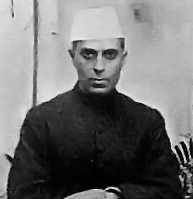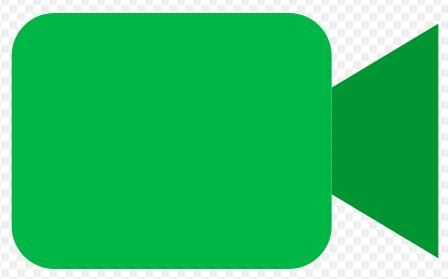
Map to the right shows Britain's holdings on the Indian subcontinent that were granted independence in 1947 and 1948, becoming four new independent states: India, Burma (now Myanmar), Ceylon (now Sri Lanka), and Pakistan (including East Pakistan, modern-day Bangladesh
Focus Question:
How did the countries of Central Asia achieve independence colonial rule?
Topics on the Page
-
Country by Country Overview of Independence
-
1947 Partition of India and Pakistan
 Timeline: A Brief History of India's Caste System
Timeline: A Brief History of India's Caste System
The Caste System: Effects of Poverty on India, Nepal and Sri Lanka. Jasmine Rao, Global Majority e-Journal, 2010.
The Breakup of Empires
Both South Asia and Central Asia have the political geography they have today because of the break up of an empire.
South Asia was once part of the British Empire, about which it was once said “the sun never sets on the British Empire” because it covered so much of the globe. After World
War II, Britain was weakened to the point of not being able to maintain as much of its territory as it was able to before the war.
 |
| Jawaharlal Nehru, circa 1927 |
India and Pakistan
That increased weakness, combined with a 20+ year freedom effort by activists in India—including Mahatma Gandhi and Jawaharlal Nehru—led to the independence of India in 1947.
As so often happens with the end of colonial rule or the independence or partition of nations (see the former Yugoslavia as an example, or the nations of South America after independence from Spain, or modern-day Zimbabwe), India saw internal conflict after independence.
Members of the dominant religious groups—Muslims and Hindus—were at odds over how to form the new government and run the new country. Muslims wanted their own state. Gandhi was against this.
Gandhi’s Nonviolent Movement for Independence
Gandhi was a proponent of nonviolent civil disobedience, as well as an opponent of the caste system and the division between Hindu and Muslim Indians. Gandhi’s acts of nonviolent resistance were called satyagraha. Most notable among them was the Salt March. Britain had made it illegal for Indians to gather or produce salt. Gandhi, gathering followers as he went, embarked on a 241 mile walk to the sea. On the shore, he bent to pick up a grain of salt, thereby defying British rule. He was joined by many across the country. This happened in 1930, long before independence was realized. This paragraph is sourced from this article.
 Here’s a biography on Gandhi from Biography.com
Here’s a biography on Gandhi from Biography.com
In the end, the country was split in two, with the formation of Pakistan to the north.
In 1971 Bangladesh split off from Pakistan, the result of a war between India and its northern neighbor. (More on the India-Pakistan split below).
Click here for a timeline on Bangladesh
Sri Lanka, independent since 1948 (as Ceylon; changing to Sri Lanka in 1972), remains in turmoil, with the group called the “Tamil Tigers” waging an on-again off-again civil war in the island nation.
Click here for a timeline on Sri Lanka
Bhutan was only partially ruled by the British, which ran the small nation’s international affairs but left Bhutan to govern itself internally through a treaty signed in 1910. Bhutan had earlier ceded some land to British India. India took over the international affairs of Bhutan after Indian independence. Currently a monarchy, Bhutan is transitioning to democratic rule.
Click here for a timeline on Bhutan
Nepal has been independent for thousands of years. The monarchy added a cabinet set up to advise the monarch in 1951, and parliamentary elections were started in 1991. Ten years later, the ruling family’s oldest son, the crown prince, massacred many members of the royal family and then killed himself. The next year, in 2002, the new king dismissed the prime minister and parliament for incompetence, but reinstated the parliament in 2006 after internal unrest. Maoist insurgents have led much of that unrest.
Click here for a timeline on Nepal.
Central Asian Nations
The Central Asian nations that were once part of the Soviet Union all gained independence in the early 1990s with the breakup of the USSR. In United States classrooms up to that point, these places called “Uzbekistan” and “Kyrgyzstan” were hardly known or discussed at all. “The Soviet Union” evoked images of pale white people in snowstorms wearing fur hats. Either that, or looming and somber pictures of Soviet leader Leonid Brezhnev on the evening news, cast as Ronald Reagan’s arch nemesis.
The truth of the Soviet Union was something much more, and the emergence of the central Asian nations from behind the iron curtain revealed a diverse, lively, and distinct group of people with their own cultures and traditions—looking far more like Chinese people than the pale, uniform stereotype put forth until that time. While most governments in this region are far from what we would call democracies, they are now self-governed by their own people, not from leaders in Moscow who were, literally, governing from an entirely different continent.
[Written by Erica Winter, December 2008; mostly no specific direct source beyond general knowledge. Information on Bhutan and Nepal, and dates of independence,
checked or found on www.aneki.com]
Kyrgyzstan: Became part of Russian Empire in 1876. Soviet power was established in the area in 1918, after the Russian Revolution in 1917. In December of 1936 was established as full Union Republic of the USSR. In December of 1990, after the Democratic movement gained power in Parliament and Askar Akayev introduced reforms, the Supreme Soviet voted to make it the Republic of Kyrgyzstan. In 1991, Akayev resigned from the Communist Party. Gained full independence from USSR on August 31, 1991. Became part of the Commonwealth of Independent States in December 1991.
Click here for a timeline of Kyrgyzstan
Sources:
Georgia: Part of the Russian Empire in 19th century. Was briefly independent from 1918 to 1921, following the Russian Revolution. Was "forcibly incorporated" into the USSR after an invasion by the Red Army in 1921. Independence gained after the collapse of the USSR in 1991, when Georgians voted for independence.
Click here for a timeline of Georgia
Sources:
Tajikistan: Came under Russia rule during the 1860's and 1870's. Russia's hold was weakened during the 1917 Revolution that put the Bolsheviks in power. Bolshevik control was gained in Tajikistan in 1925. Became independent following the break up of the USSR in 1991. Civil war followed from 1992-1997.
Click here for a timeline of Tajikistan
Sources:
Turkmenistan: Annexed by Russia between 1865 and 1885. Became a Soviet Republic in 1924. Declared sovereignty in 1990. Achieved full independence upon the collapse of the Soviet Union in 1991. Became a member of the Commonwealth of Independent States in December of 1991.
Click here for a timeline on Turkmenistan
Sources:
Uzbekistan: Taken over by Russia in the late 19th century. Showed some resistance to the Red Army during WWI, but this was suppressed and a Socialist Republic was established in 1924. Overuse of agrochemicals left the land poisoned. The Aral Sea and rivers were left partially dry due to water depletion. In 1990 declared own laws and sovereignty. Independence was gained in 1991 with the collapse of the USSR. In December of 1991, joined the Commonwealth of Independent States.
Click here for a timeline on Uzebekistan
Sources:
Afghanistan: History of fighting against Persians and the British. From 1839 to 1842 Britain installed a puppet king. Afghanistan served as a buffer between the British and Russian Empires. Gained independence from British control in 1914. The Soviet Union invaded in 1979 to back the Afghan Communist regime. Did not withdraw until 1989. The Taliban gained control in 1994 and remained in power until the United States intervened after the events of September 11, 2001. First democratic Presidential held in 2004, Hamid Karzai won the presidency.
Click here for a timeline on Afghanistan
Sources:

Link here for a packet on independence on Southeastern Asia
India and Pakistan Partition of 1947
Emergency trains crowded with refugees

Books
The Great Divide: The Violent Legacy of Indian Partition. The New Yorker (June 29, 2015)
Select Research Bibliography on the Partition of India (Primary Documents)
The Road to Partition 1939-1947 from The National Archives (UK)
India's Partition: In Pictures from BBC
Partition of India
In the leadup to India’s independence in 1947, most Indians wanted a unified India, as did Great Britain. Britain was now under Clement Atlee, not the former racist PM, Winston Churchill, and therefore the colonizer was more amenable to Indian independence. The key group that did want a partitioned state was the Muslim minority, led by Muhammad Jinnah. Jinnah and his supporters felt that the interests of their people would best be served by having an independent, Muslim majority state: Pakistan.
This state was to be divided into an eastern region - what we know now as Bangladesh, and a western region which is still called Pakistan. The constituent Indian states were allowed to declare allegiance to India, Pakistan, or their own independence. Notably, Kashmir, which now accounts for a large part of the conflict between the two countries, opted for (but didn’t get) independence.
Fun fact: PAKiS-TAN is an acronym for five of the states that made it up: Punjab, Afghania, Kashmir, Sindh, and Baluchistan.
These details are drawn from a three minute video on “Why was India Partitioned?”
The partition of India led to considerable violence as Hindus in Pakistan were forced to leave as were Muslims in India. See this multicultural resource on how rape affected women during the partition, and how new reports continue to surface.
 |
| Indian soldiers, Into-Pakistan War of 1947 |
Genocide of 1971
In 1970, there were elections in Pakistan for the first time. When the more populous East Pakistan (now Bangladesh), voted for Sheikh Mujibur Rahman, dictator General Yahya Khan was not happy. He didn’t call the newly elected government up, and violently put down the unrest that resulted. Over a million people died. India stepped in and quickly ended the conflict, enabling Bangladesh to declare independence.
Importantly, despite protests of men on the ground like Archer Blood, the US did not condemn the actions of the Pakistani government. Pakistan was thought by Kissinger and Nixon to be too important of a Cold War ally, and they used her to make overtures to China.
For more details, see this Smithsonian article.
- Link here for a lesson plan from PBS on the India Pakistan Partition. Designed for 9-12 grades but can be adapted for lower grades
- Link here for a lesson plan on India and England's control of the country
Pakistan: A Political History. Asia Society, Columbia University
For more background, link to 1900 - 1950: A Half Century of Crisis and Achievement, from Asia for Educators
 BBC Documentary
BBC Documentary
More Sources
http://festivals.iloveindia.com/independence-day/index.htmlhttp://
www.iexplore.com/dmap/Bhutan/History
http://www.iexplore.com/dmap/Bangladesh/History
http://www.iexplore.com/dmap/Pakistan/History
http://www.english.emory.edu/Bahri/Part.html
http://www.iexplore.com/dmap/Sri+Lanka/History
http://www.iexplore.com/dmap/Nepal/History
http://www.country-data.com/cgi-bin/query/r-6138.html
Comments (0)
You don't have permission to comment on this page.